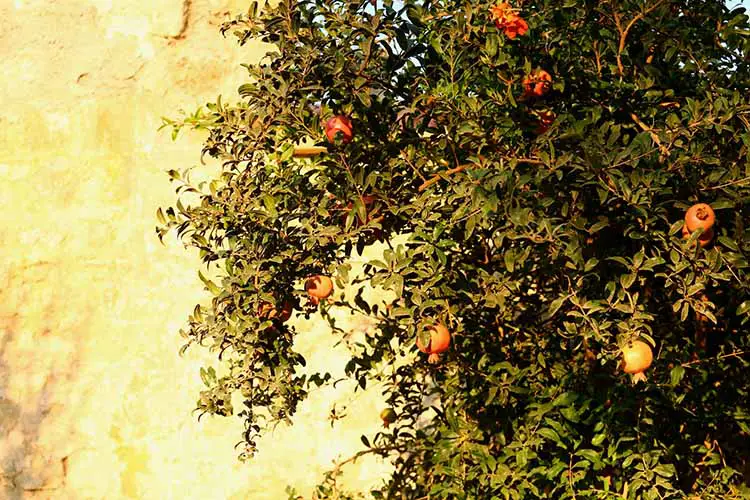
We may receive commissions from purchases made through links in this post, at no additional cost to you.
It’s hard to imagine that the little, somewhat scraggly pomegranate bush I picked up at a local plant sale will grow into a huge, bountiful, multi-stemmed tree someday. Perhaps it will even outlive me, or at least my time in my current home. And that during its life it will produce thousands of jewel-like, sweet/tart fruits.
But, that’s exactly what pomegranate trees do. They grow vigorously, produce fruit prolifically, and live a very long time in the right growing situation. So what kind of lifespan can you expect from your newly-planted pomegranate tree (or the one you’re pining over at the nursery)? How long will it live and bear fruit?
Pomegranate trees produce fruit for 30 years or more but can live as long as 200 years in ideal growing conditions. After 25 or 30 years, the quantity and quality of fruit will begin to decrease as a tree’s vigor declines. Pomegranate trees start fruiting once they are 2 or 3 years old.
One of the joys of growing fruit trees is the knowledge that this little sapling or shrub you plant now could give you years – potentially even generations – of fruitful harvests. Read on to learn about pomegranates in history and culture, as well as how long a pomegranate tree can live and produce fruit.
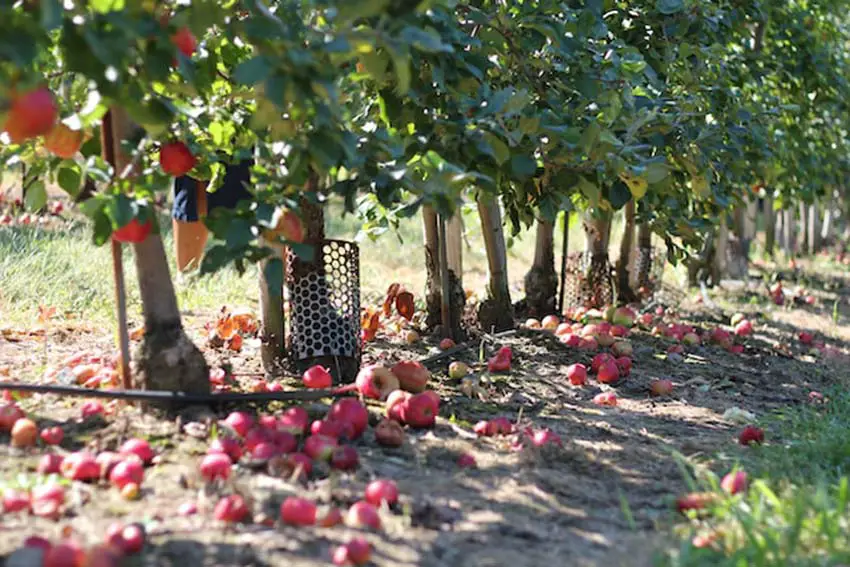
Pomegranate History and Culture
Pomegranate trees not only have a long lifespan, but as a species, they have been around for literally thousands of years. Pomegranates originated from Western and Central Asia in ancient Persia – the area that now spans Iran to Northern India – between 5000 and 3000 B.C.
Pomegranate trees were cultivated in Persia, Babylon, Egypt, and Ancient Greece. The seafaring Phoenicians reputedly brought the pomegranate to Sicily and on to Europe in Roman times, where it was used primarily as a decoration.
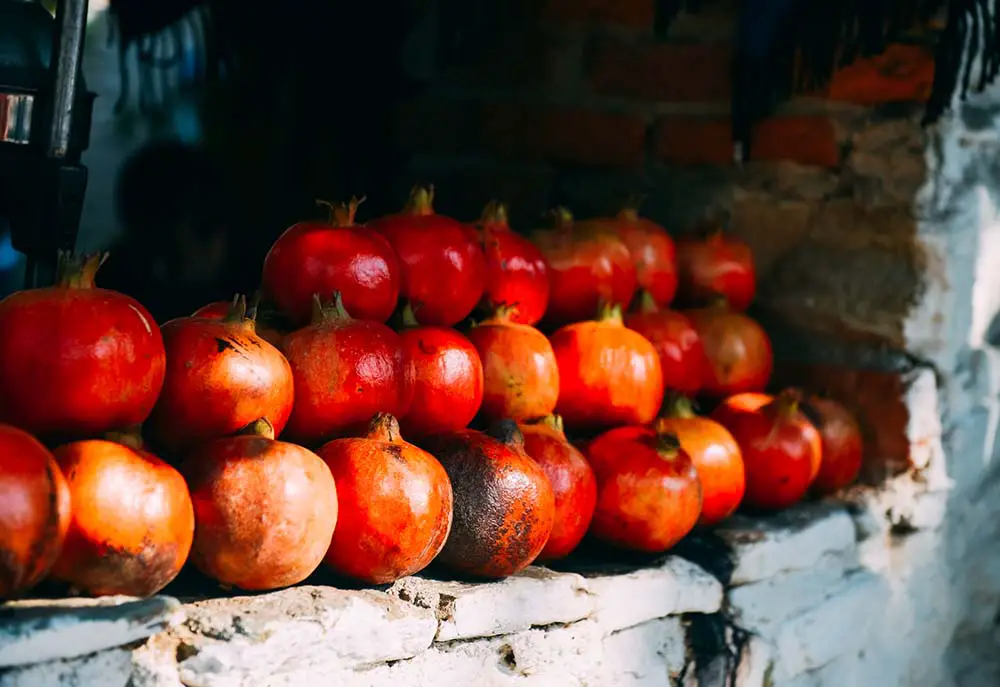
It’s thought that Spanish missionaries brought the pomegranate to the New World in the sixteenth century, and then it made its way to California with early settlers in the early 1700s.
The Pomegranate’s Place in Culture
The botanical name of the plant, Punica granatum, literally means “seeded apple.” Translated into Middle French, “seeded apple” becomes “pome garnete,” which eventually became the English “pomegranate.”
Pomegranates hold significance in many cultures, due to how widely they were used and cultivated. The fruit is central to the Greek mythological story of Hades and Persephone as a symbol of life, marriage, and fertility. Hades tricks Persephone into eating the pomegranate seeds, which binds her to return to the underworld for half of the year (winter) and live on earth the other half (spring).
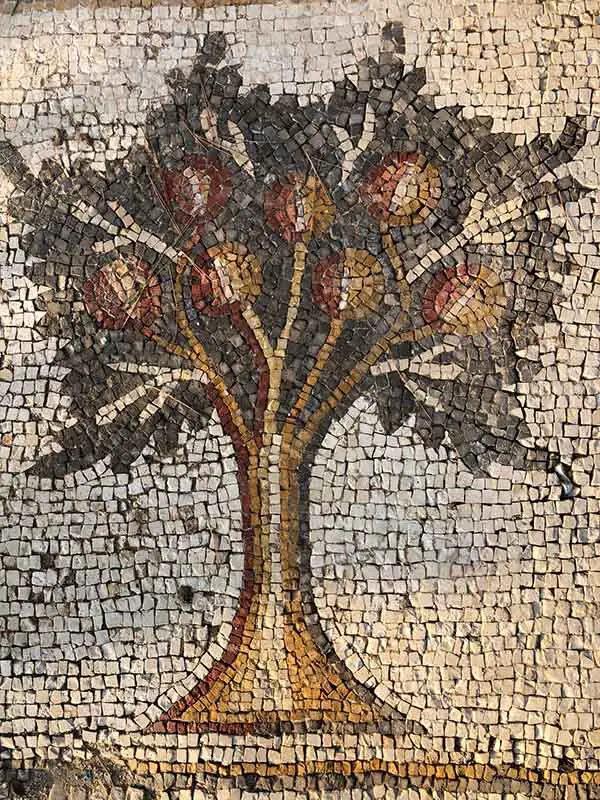
Israel used pomegranates in religious ceremonies, and they are described in the Old Testament as decorations on priestly garments (Exodus 28:33-35) and in Solomon’s temple (1 Kings 7:20). Pomegranates were also used as a symbol of fruitfulness and blessing on the nation of Israel (Deuteronomy 8:8, Numbers 13:23), and as a symbol of beauty and abundance in the Song of Solomon.
In Turkey, a bride could predict how many children she’d have by smashing a pomegranate to see how many seeds came out. Pomegranates were even referenced in an ancient Egyptian proverb about staying young: “Eat a pomegranate and visit a bath; your youth will haste back.”
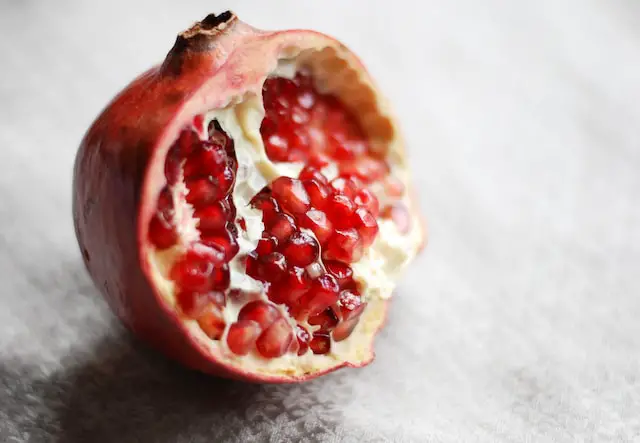
The rind of pomegranates has been traditionally used in dyes, medicines, and cosmetics. Pomegranate arils (the juicy red pulp surrounding the seeds) have numerous health benefits. It is a vitamin-rich, high-fiber, anti-inflammatory fruit that is a source of vitamin C, K, Potassium, as well as antioxidants.
The Long Life of a Pomegranate Tree
Pomegranate trees produce most of their fruit in the first 25 years of life, but they can potentially live and fruit much longer. The oldest known pomegranate trees have lived for 200 years or more. The longest-lived trees are those that are grown in ideal conditions.
Pomegranate trees love hot summers, dry air, and cool winters. They can grow in various types of soil, as long as it’s very well-drained. They require little fertilizing and pruning. Pomegranate trees tolerate drought stress, but they do need regular water during the fruiting season.
Learn more: Parched Pomegranate Tree? How to Water It Well
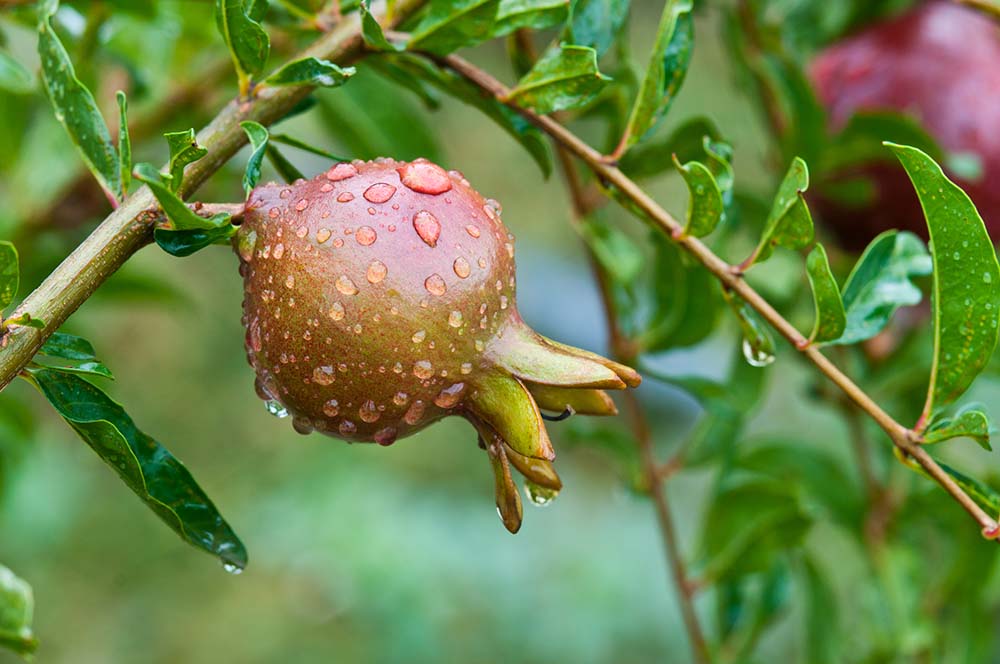
Just as ideal growing conditions help a tree live a long, productive life, certain things can reduce a pomegranate tree’s lifespan. Pomegranate trees are very resistant to cold for a subtropical plant, but prolonged periods of extreme cold (around 10-20°F) will stress and damage the tree. Repeated cold stress could shorten its life.
Although they love the heat, pomegranate trees do not thrive in wet-heat climates with high humidity. The disease pressure is much greater in climates with a lot of humid weather. A pomegranate tree under prolonged stress from fungal disease will have a shorter life.
There aren’t many pests that regularly threaten pomegranate trees, but termites do love to feed on the bark. Trunk damage from frost or pests could leave a tree vulnerable to future pest and disease problems. Again, the life of a pomegranate tree will be shortened by any sort of prolonged stress or weakening of the tree.
Can you determine the age of a pomegranate tree?
There is no reliable way to determine the age of a pomegranate tree. Tree size and productivity can be used to estimate its relative age, but not with a significant amount of accuracy. Pomegranate trees are often pruned yearly to keep the size in check.
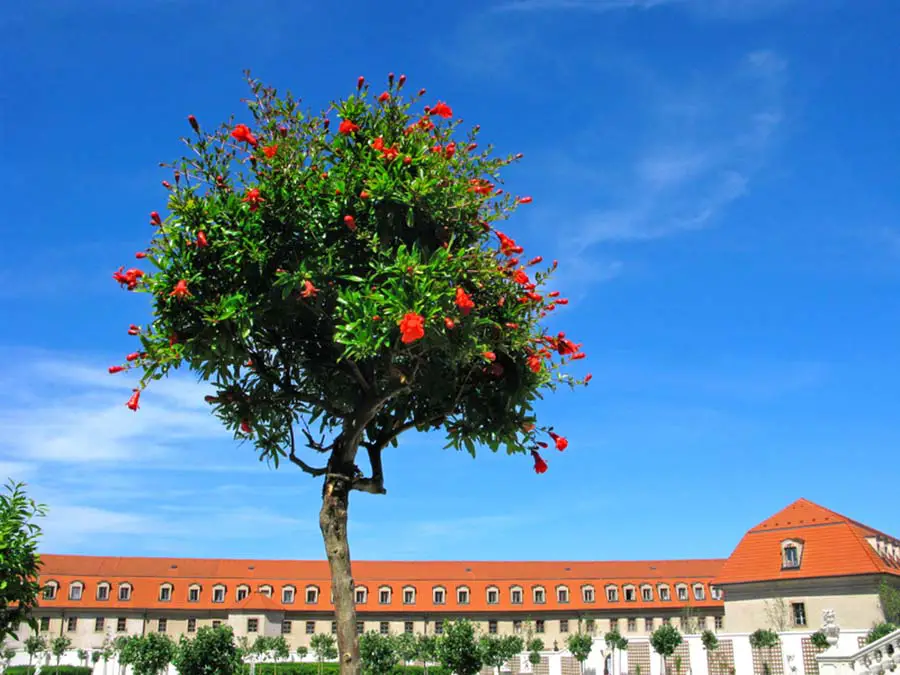
Pomegranates naturally grow in a multi-stemmed shrub form, but they can be pruned into a single-trunk tree. The trees readily send out new shoots from the base, which must be trimmed regularly. These new shoots are sometimes encouraged to grow in order to replace older fruiting wood. This makes it difficult to estimate a tree’s age since pruning practices vary.
A Pomegranate Tree’s Fruiting Years
Pomegranate trees produce their first significant harvest at 3-5 years old. You may see some pomegranates after only a year or two, but chances are they will be small, underdeveloped, and/or lacking flavor.
As the tree grows, the crop will increase each year. Pomegranate trees are most productive between year 5 and year 25. Anecdotally, however, a well-established tree can keep producing pomegranates for 30-40 years or more. At its peak, a full-grown pomegranate tree can produce up to 75 pounds of fruit, (100-200 pomegranates) per season.
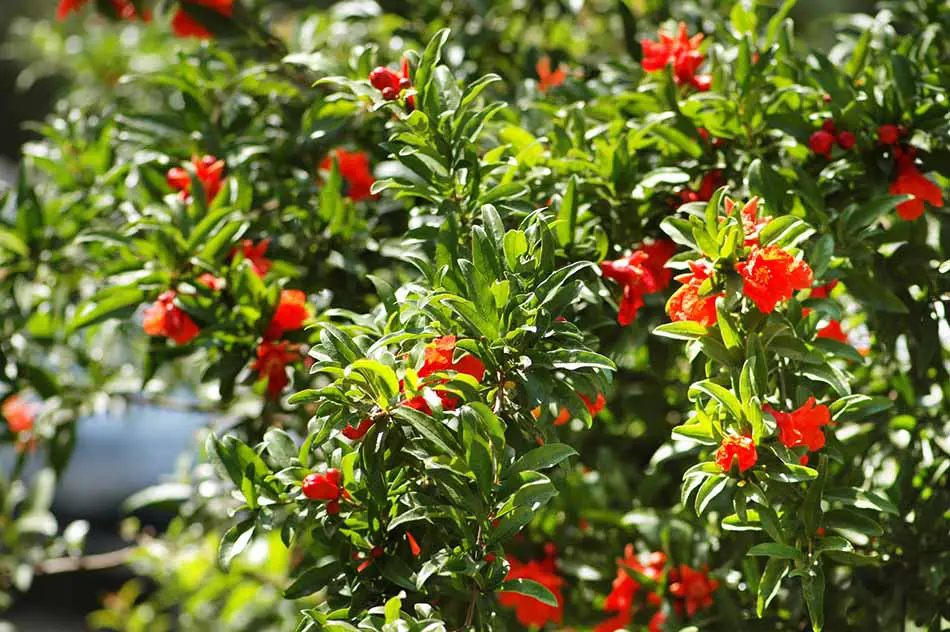
Learn more: Perfect Timing: When Does a Pomegranate Tree Bloom and Fruit?
The fruiting vigor of pomegranate trees will probably begin to decline after 20 to 25 years. The fruit quality and quantity will diminish over time as the tree gets older and its growth slows.
How big will a pomegranate tree grow?
Most fruiting pomegranate shrubs grow to be 8-12 feet tall (and about as wide) if pruned regularly. If left unpruned, some pomegranate varieties will continue grow to be 20 feet or more.
Pomegranate shrubs naturally have a multi-stemmed, vaselike shape that is narrower at the bottom and wider at the top. Pomegranates pruned to be a single-stemmed tree may grow taller, 20-30 feet.
There is a lot of mixed information about the eventual size of pomegranate trees, even among nurseries and growers, because so much of it depends on pruning and training. But, essentially, they will keep growing and growing unless they are pruned back. Eventually, a pomegranate tree’s vigor will slow dramatically as it gets older.

